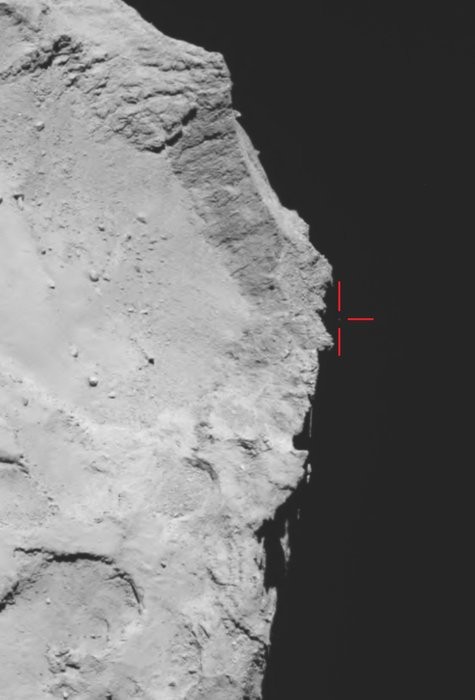Philae Lander Found Above Comet; Scientists Hope Lander Will Wake Up Soon
| Ana Verayo | | Feb 02, 2015 05:59 AM EST |
(Photo : ESA/Rosetta/MPS for OSIRIS Team MPS/UPD/LAM/IAA/SSO/INTA/UPM/DASP/IDA) Rosetta’s OSIRIS wide-angle camera captured this view of Comet 67P/Churyumov–Gerasimenko in November 2014.
After landing on comet 67P/Churyumov-Gerasimenko, the Philae lander launched by European Space Agency's Rosetta probe is still missing. Scientists anxiously wait for its signal.
The Rosetta spacecraft was launched in 2004, travelling across deep space to reach comet 67P. When Rosetta caught up with the comet in August 2014, this historic event marked the first time a spacecraft was able to orbit a comet.
Like Us on Facebook
In November, the Philae probe from Rosetta landed on the surface of the comet but had a hard landing and bounced off across its terrain. Shortly after, the lander's battery died. It did, however, manage to send important data before it went into hibernation mode.
During this mission, Rosetta was able to take hundreds of high resolution images of comet 67P but hasn't yet located its sleeping lander. ESA scientists suggest it's best to wait for a signal from the lander as soon as it wakes up.
The ESA mission team suggests Philae's touch down on the surface of the comet involved bouncing off on its surface four times.
Rosetta's Optical, Spectroscopic and Infrared Remote Imaging System (OSIRIS) also captured images of the first landing of the Philae lander. Scientists believe Philae is hidden under a deep shadow of a cliff but they are still waiting for visual confirmation.
The latest image from OSIRIS suggests Philae could be above the rim of a large depression called Hatmehit found on the comet's small lobe.
The reason why Philae's battery died is that it's not getting enough sunlight to power its solar panels. The lander must get 6.5 hours of solar power during the 12.4 hours of comet day. At its current location, Philae is only getting 1.3 hours of sunlight.
Scientists hope the lander will wake up by late March. It can take a few months before the lander can start sending signals and data again back to the Rosetta probe.
Philae needs 17 watts of power to wake up. Scientists believe Philae will receive enough sunlight for its solar panels in May.
TagsPhilae Lander Found Above Comet 7P; Scientists Hope Lander Will Wake Up Soon, ESA, philae lander, rosetta probe, philae lander found comet 67P, location philae lander comet 67P, comet 67P philae lander sleeping wake up soon, Philae Lander Found Above Comet; Scientists Hope Lander Will Wake Up Soon
©2015 Chinatopix All rights reserved. Do not reproduce without permission
EDITOR'S PICKS
-

Did the Trump administration just announce plans for a trade war with ‘hostile’ China and Russia?
-

US Senate passes Taiwan travel bill slammed by China
-

As Yan Sihong’s family grieves, here are other Chinese students who went missing abroad. Some have never been found
-

Beijing blasts Western critics who ‘smear China’ with the term sharp power
-

China Envoy Seeks to Defuse Tensions With U.S. as a Trade War Brews
-

Singapore's Deputy PM Provides Bitcoin Vote of Confidence Amid China's Blanket Bans
-

China warns investors over risks in overseas virtual currency trading
-

Chinese government most trustworthy: survey
-

Kashima Antlers On Course For Back-To-Back Titles
MOST POPULAR
LATEST NEWS
Zhou Yongkang: China's Former Security Chief Sentenced to Life in Prison

China's former Chief of the Ministry of Public Security, Zhou Yongkang, has been given a life sentence after he was found guilty of abusing his office, bribery and deliberately ... Full Article
TRENDING STORY

China Pork Prices Expected to Stabilize As The Supplies Recover

Elephone P9000 Smartphone is now on Sale on Amazon India

There's a Big Chance Cliffhangers Won't Still Be Resolved When Grey's Anatomy Season 13 Returns

Supreme Court Ruled on Samsung vs Apple Dispute for Patent Infringement

Microsoft Surface Pro 5 Rumors and Release Date: What is the Latest?










